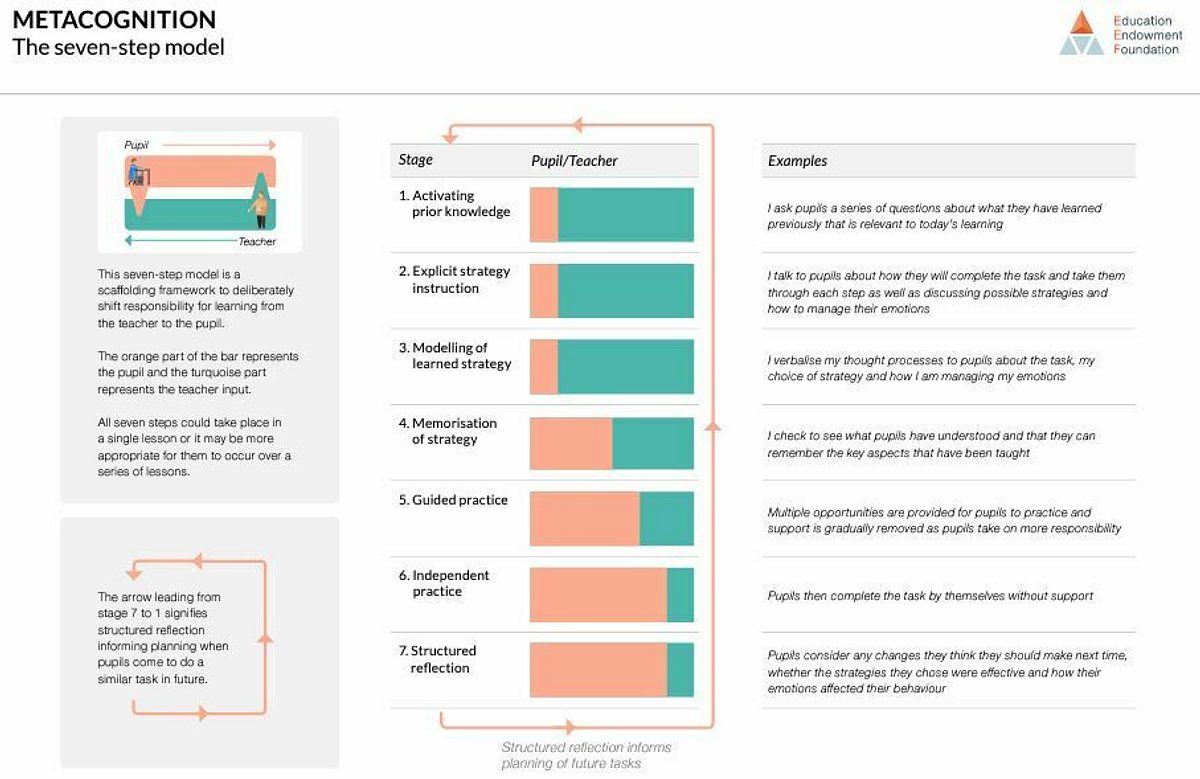A lack of independence is related to many of the challenges teachers face each day. From the perennial challenges of homework and revision to tasks in the classroom, like extended writing, we are always seeking to scaffold towards greater independence.
It is important to avoid misconceptions around how best to cultivate children’s independence. It is key to recognise that pupils don’t just develop self-sufficiency by being given lots of tasks to work on alone. It is a process that is purposefully supported though explicit modelling and teaching. Eventually, novice pupils go on to develop strategies for themselves by recognising similarities and differences between things they have seen and done before.
When this move from dependence to independence occurs, pupils are more successful in our classrooms. It also means they are better equipped to face the challenges which life might throw at them outside of school, which is exactly what we want for our pupils.
A framework to develop independence
The ‘Seven-step model’ from the EEF Metacognition and Self-regulated Learning Guidance report offers us a useful framework to support teachers in developing their pupils’ independence.
We have developed this into two planning tools to help you consider how you can apply this in your own classroom and help your pupils to take more ownership of their learning.

The first tool provides more detail about each of the seven steps, while the second can be used to help practitioners explicitly plan how to approach deliberately shifting the responsibility from themselves to the pupil during a lesson, activity or over the course of a series of lessons:
Activating prior knowledge: Consider the key concepts that you have taught previously and what the pupils need to know to access the lesson. There will be differences in what and how much each child knows about the topic, but what is the essential knowledge and how will you ensure all pupils have it before you move on?
- Explicit strategy instruction: What is the new knowledge or new technique that you are teaching? Ensure you are not teaching too much in one go as you don’t want to overload pupils’ working memory.
- Modelling of learned strategy: Think about how you will model how to complete the task, but also how you will model your thought processes as you do this. Consider how you will explicitly demonstrate perseverance, resilience and learning from mistakes you have made in the past.
- Memorisation of strategy: How will you check to see if pupils have understood what you have taught them? Avoid just asking one or two pupils and assuming that this reflects the understanding of the whole class.
- Guided practice: What support will you put in place initially for all pupils? How will those in need of extra help be supported in a way which promotes and sustains their confidence and competence once the scaffold is removed?
- Independent practice: Pupils will need varying amounts of guided practice, how will you plan for them all to have the opportunity to engage in independent practice, and what will this look like?
- Structured reflection: Individually or in small groups, support pupils to think about what went well and what they would do differently next time. Also encourage them to reflect on how their emotions and motivation levels affected their performance in the task. [Notice the arrow on the ‘Seven-step Model’ model, showing the importance of returning to this reflection when pupils do a similar task in the future.
Supporting pupils and scaffolding their learning in this way can help every pupil move from dependence to independence. Not only that, but by improving pupil performance, we can develop their belief in their own competence and in turn, their motivation to achieve. Whether it is improved homework, revision, or similar, the benefits are likely to pay off for our pupils.
Evidence and resources
